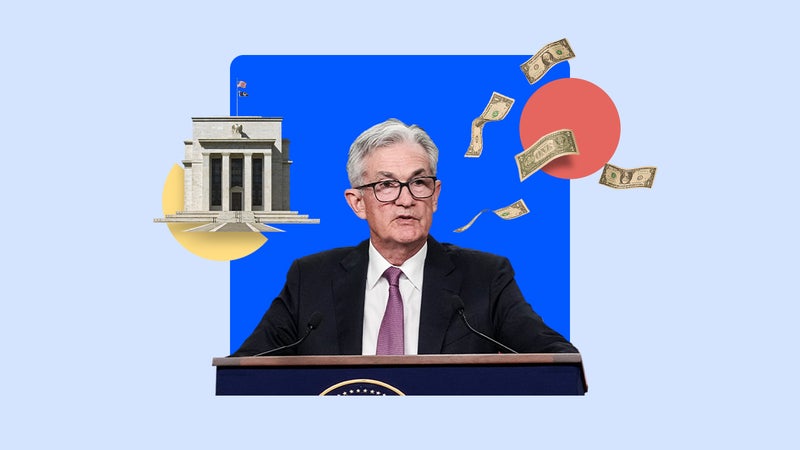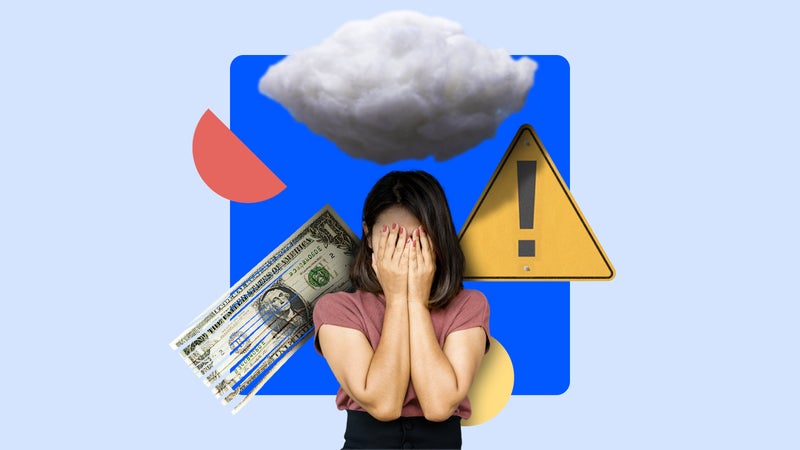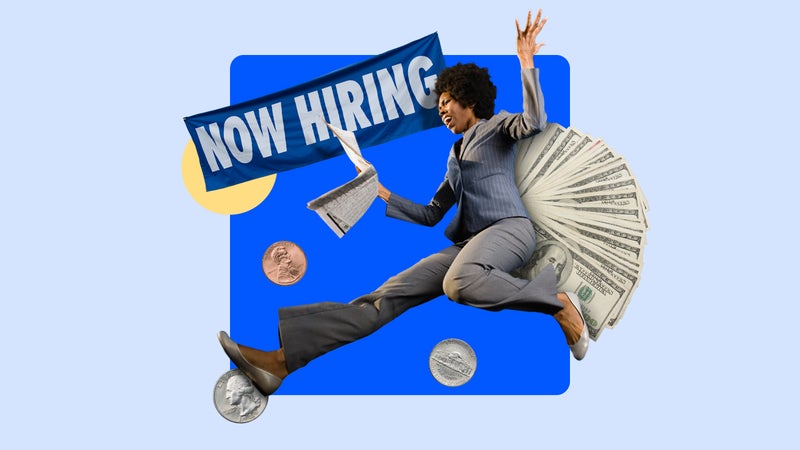Survey: Inflation could remain stuck above Fed’s 2% target until 2025

The Bankrate promise
At Bankrate we strive to help you make smarter financial decisions. While we adhere to strict , this post may contain references to products from our partners. Here's an explanation for .
Inflation isn’t as monstrous as it was just last summer, but the cooldown isn’t happening as quickly as the surge — and economists say it may take more time before consumers fully feel relief from higher prices.
A large majority of experts (or 41 percent) expect that inflation won’t settle in at the Federal Reserve’s preferred 2 percent goal post until at some point by the end of 2025, according to Bankrate’s third-quarter Economic Indicator poll. The rest are split on whether inflation will cool enough by the end of 2024 (29 percent) or by the end of 2026 or later (29 percent). No economists expect inflation to reach the Fed’s target by the end of this year.
Consumers have been dealing with soaring inflation since the beginning of 2021. Supply shocks and resurgent consumer demand coming out of the pandemic combined like two pressure systems in a tornado — forming the worst bout of inflation in 40 years. Prices reached an eye-catching high of 9.1 percent in June 2022 and have since slowed to 3.7 percent, according to the Bureau of Labor Statistics’ consumer price index (CPI).
Americans have watched the items they both want and need become unaffordable. Prices on gasoline, groceries and utilities all jumped, as did the cost of taking a vacation and eating a meal out. Periods of high inflation can be damaging to Americans’ finances, leaving scars long after those price gains slow. That’s especially true for those who’ve had to turn to high-interest credit cards or cut back on their retirement contributions to make ends meet during the inflationary storm.
Economic and market cycles are both unpredictable and always ongoing. The challenge and opportunity for all of us is to weather the turbulence of these cycles along the way.— MARK HAMRICK | BANKRATE SENIOR ECONOMIC ANALYST
Key insights on the economy from Bankrate’s third-quarter Economic Indicator poll
These factors are keeping inflation sticky, economists say
Determining how sticky inflation may be first requires tracing its sources — and those factors have changed over the past two years since prices first skyrocketed.
Improving supply bottlenecks and falling energy prices were at first aiding deflation. The trend, however, has recently been reversing. Overall inflation in August accelerated from a year ago for the second consecutive month, with more than half of the increase originating from higher gasoline prices, according to the Bureau of Labor Statistics.
Costs at the pump fell as much as 26.5 percent from a year ago in June. Since then, however, they’ve picked back up again, jumping 10.6 percent between July and August alone.
Improvements in headline inflation will be much harder to come by over the next year compared with the previous 12 months. Shelter inflation will gradually ease in the coming months, but energy will no longer provide a strong headwind to inflation as prices have picked up recently.
— Dante DeAntonioSenior director at Moody's Analytics
Energy and food prices tend to whipsaw from month to month, and it’s also an area the Fed is most defenseless against. U.S. central bankers cannot produce more oil or prevent supply-related shocks. But those forces can still make the Fed’s job harder, especially if households come to expect that inflation will be hotter over time. Energy prices can also be pervasive, impacting all twists and turns of the supply chain — from the production to the shipping of products. If those price increases persist for long enough, businesses may have to pass along hikes to protect their profit margins.
Shelter prices have also been driving inflation lately, rising in August for the 40th straight month, CPI data shows. Yet, those measures often come with a lag, and more immediate snapshots of the housing and rental market suggesting prices aren’t climbing as fast as they once were.
That cool-down could even be reversing, too. After seven consecutive months of declines, home prices have been rising again for six consecutive months, according to S&P Corelogic Case-Shiller Home Index. Elevated housing prices combined with the sharpest surge in mortgage rates in recent memory can have knock-on effects for rent costs, too, if it leads Americans to forgo homeownership for renting.
Inflation will continue to decelerate, especially as the lagged effects of lower rents and home prices will continue to show in the data. The concern is rising food and energy prices, which could have inflationary effects on other areas of the economy.
— Yelena MaleyevSenior economist at KPMG
The Fed sees so-called “core” inflation — which excludes food and energy — as the primary indicator of where price pressures are heading. There’s been some improvement. After rising 6.6 percent from a year ago just last September, the measure in August climbed at an annual rate of 4.3 percent. Yet, that’s still two times the Fed’s preferred target.
Fed Chair Jerome Powell has said those inflationary forces could be coming from the services side of the economy, a measure that has direct ties to the historically tight job market. To lure more workers, employers are lifting wages at a pace the Fed doesn’t consider to be consistent with 2 percent inflation. Officials have argued that the job market needs to slow if they’re going to finish the job and bring inflation back down.
To get down to 3 percent inflation, the unemployment rate would have to get above 4 percent. However, to get down to 2 percent, we expect the unemployment rate to rise much higher as inflation remains very sticky.
— Tuan NguyenEconomist at RSM
But not all economists are as convinced that inflation’s stickiness is the job market’s fault. They point out how much inflation has already slowed without a material dent in unemployment and hiring. They also mention just how tight the job market was in the era before the coronavirus pandemic, when joblessness had hit a half-century low and price pressures proved to be tepid at best.
The division highlights what could be a prominent debate for Fed officials, as they decide how much more they need to raise rates to slow the economy and defeat inflation.
If the Fed still has this relationship built into their macroeconomic model, they should discard it. We were able to maintain record-low unemployment and keep inflation even below the Fed’s target in the years prior to the pandemic. We can do so again without driving joblessness higher. Let’s get rid of this fossilized thinking that people must lose their jobs to bring inflation down.
— Bernard BaumohlChief global economist at The Economic Outlook Group
-
The Third-Quarter 2023 Bankrate Economic Indicator Survey of economists was conducted Sept. 9-26. Survey requests were emailed to economists nationwide, and responses were submitted voluntarily online. Responding were: Mike Fratantoni, chief economist, Mortgage Bankers Association; Odeta Kushi, deputy chief economist, First American Financial Corporation; Tuan Nguyen, economist, RSM US LLP; Bernard Baumohl, chief global economist, The Economic Outlook Group; Yelena Maleyev, senior economist, KPMG US; John E. Silvia, founder, Dynamic Economic Strategy; Gregory Daco, chief economist, EY; Brian Coulton, chief economist, Fitch Ratings; Michael Pearce, lead U.S. economist, Oxford Economics; Scott Anderson, chief U.S. economist, BMO; Dante DeAntonio, senior director, Moody’s Analytics; Lawrence Yun, chief economist, National Association of Realtors; Bernard Markstein, president and chief economist, Markstein Advisors; Robert Frick, corporate economist, Navy Federal Credit Union; Bill Dunkelberg, chief economist, NFIB; Mike Englund, chief economist, Action Economics; and an economist at a private-sector analytics firm who asked to remain anonymous.


